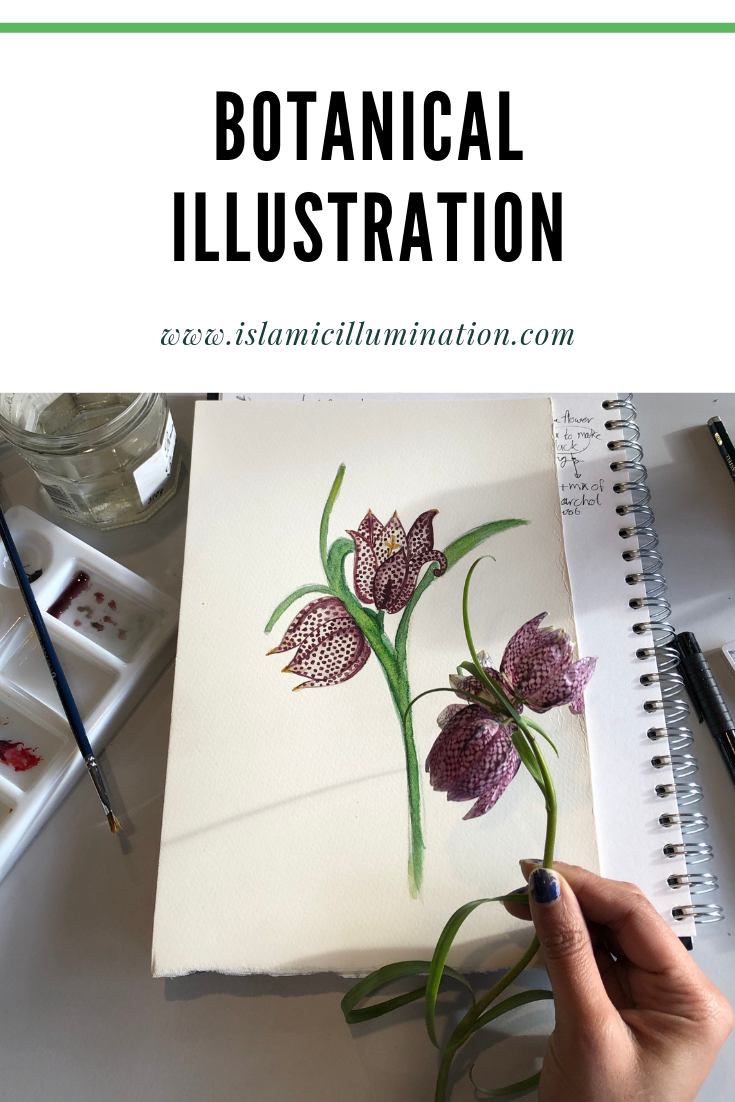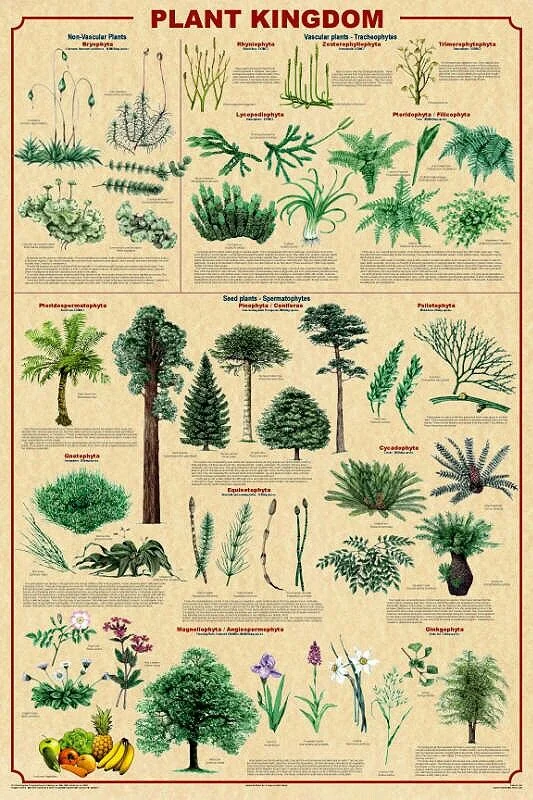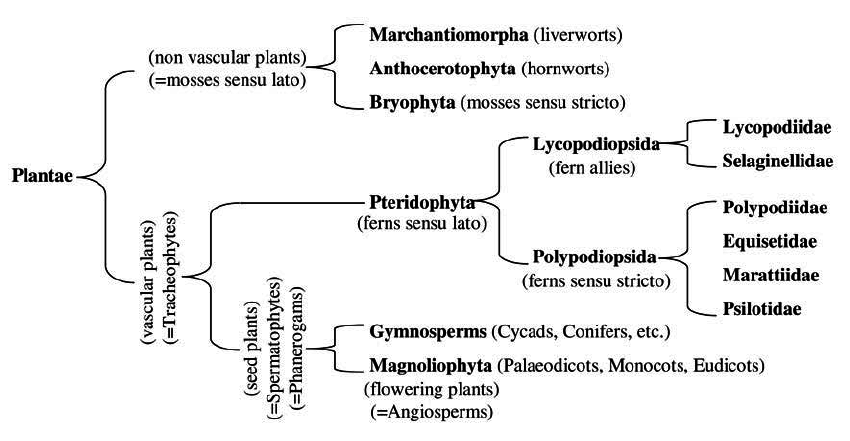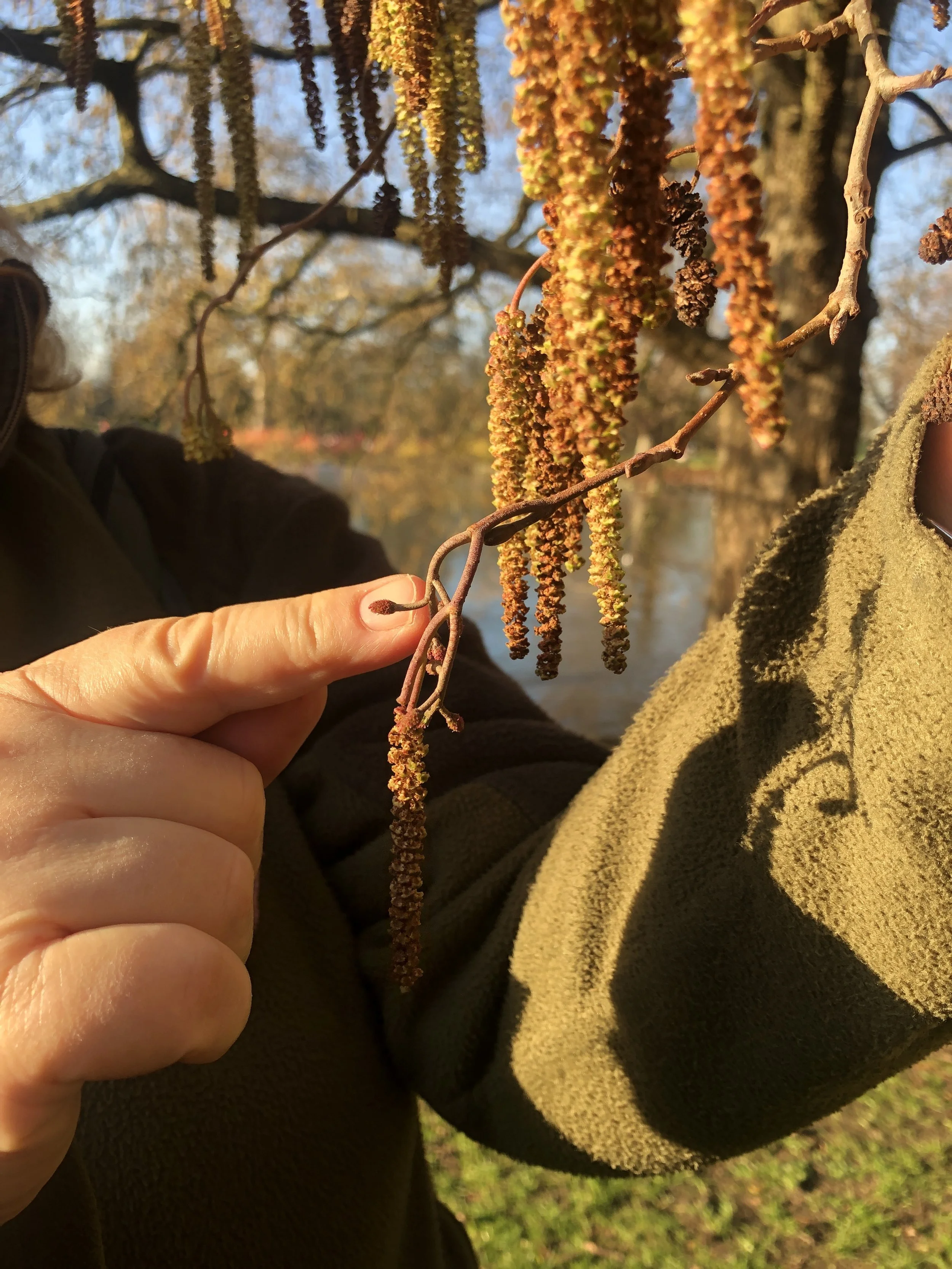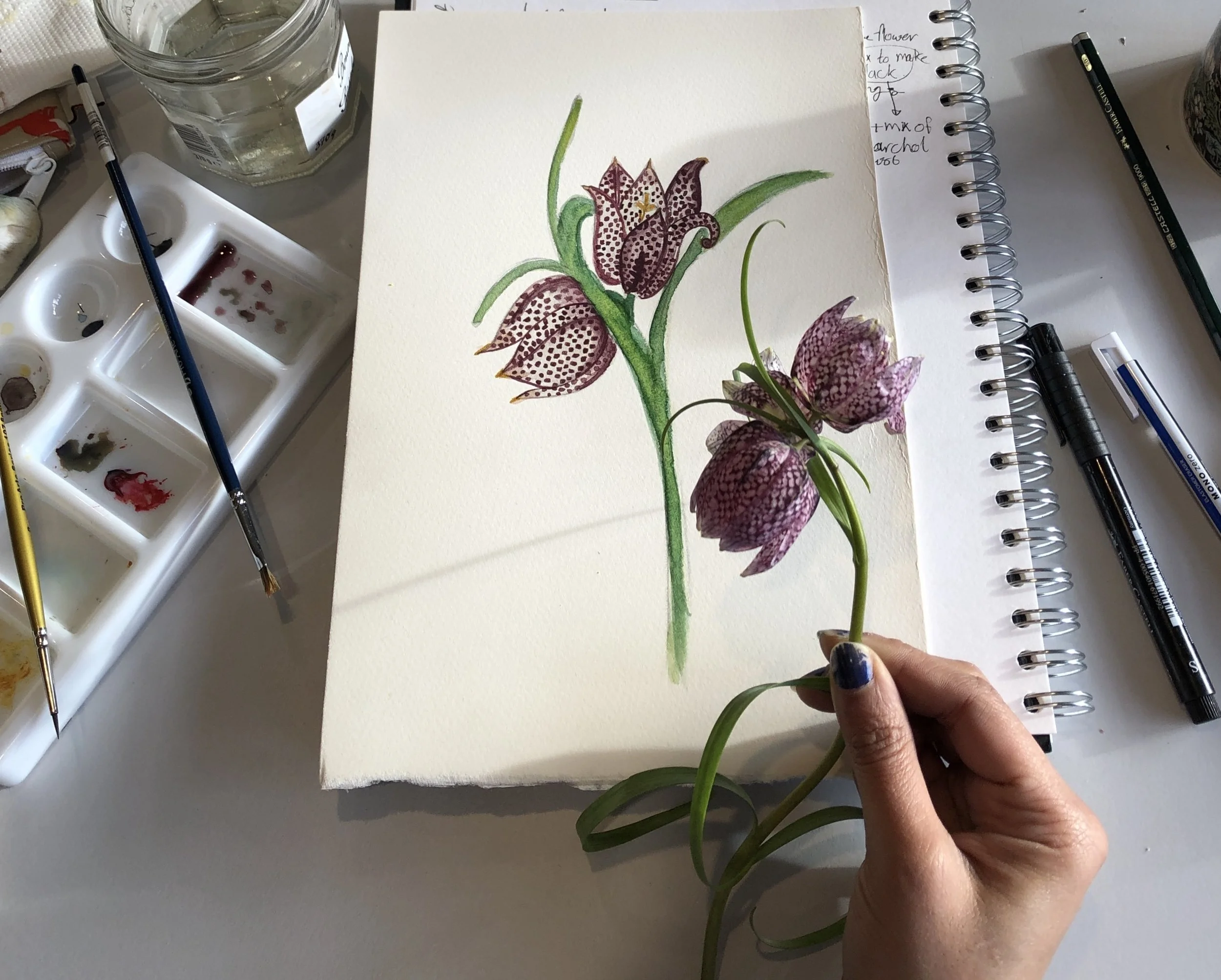Botanical Illustration
This year, I am taking a serious step to improving my drawing and painting skills when it comes to the botanical art and illustration aspects especially that nature and flowers are heavily present in my Islamic illumination work. I usually paint stylised flowers and most of the time they are from imagination.
When the natural elements were first added to Qurans and manuscripts a few centuries ago, they represented the real flowers in the surrounding environment. That’s why I wanted to have a better understanding of what I am drawing and the styles I am painting and shading. Although, there is an imaginative side to the organic forms I paint, it is good to base them on real botanical drawings. That is why I am taking four different botany and botanical drawing classes: Introduction to Botany, Botany Illustration and Taxonomy, Botany on the Page and Flowers and Nature in Indian Miniature.
This post is summing up what I learnt in the first two classes I have attended.
Introduction to Botany
I started with an introduction to botany class that I took in City Lit, an educational institute near Holborn station in London. The class was divided to two sections: a morning in class learning basic scientific botany, which means learning the biology of plants, and an afternoon wandering in close by city parks to put that science into practice. I was never good with biology and I never found it interesting when I was in school, but I learnt to appreciate it after painting. The plant world is absolutely fascinating and identifying plants families and categories is even more so. It was a good way to start thinking deeper of plants and their formation, which is really useful to know when you are drawing various flower types. My favourite part was going out of the classrooms and looking at flowers and trees and figuring out how they are categorised. This little introduction course is based on the first chapter of the RHS Botany for Gardeners: The Art and Science of Gardening book. If all of this is sounding interesting to you then you can get the book and start learning!
Botanical Illustration and Taxonomy
The following month, I attended an intensive one-week long Botanical Illustration and Taxonomy class at the Prince’s School of Traditional Arts with Jessica from Inky Leaves. We started with painting leaves, which is considered the deep end of botanical art and it was very difficult to understand the shading techniques to start with. We had the real leaf in front of us, but to make it easier to paint, we took pictures of it as well to control the highlight and shadow. I played with two leaves and I realised that painting one leaf takes a number of layers not just two or three. I did more like 10 and I was still not fully done! Following the leaves, we moved on to fruit: pomegranates and berries, which presented another challenge to control another set of colours. It turns out, I was more comfortable with reds and we repeated the same process of taking close images of the pomegranates and the berries and trying to bring the colour-ways into reality. Getting the colour right, gives a very nice 3D affect as well. Lastly, we learnt about painting flowers. Some students found them easier and some found them harder. I was not sure. To me at this stage, all of the things we tried did not come easy to me, but the flowers we chose have various colours that were fun to experiment with. I got to experiment with painting an orange and yellow tulip and a white lily. It was fun adding all the little details. A five day course was nice as a very brief introduction, but it only scratches the surface. I needed five days of each of the elements that we worked on in that week. It was also interesting to make our own green, reds, brown and greys from the primary colours.
Things I learnt from the Botanical Illustration and Taxonomy short course:
Botanical illustration is an observational art. You have to look very closely to your subject, how the light is reflecting on it and how you can replicate what your eyes can see as accurately as possible.
Painting botany needs a lot of watercolour layers and for that you need thick and smooth watercolour paper that does not curl with multiple layers. The paper weight I tried ranges between 400-600 gsm.
Painting flowers and leaves does not have one rule. Each category has its own painting styles. Sometimes it’s a wet brush and sometimes it’s a dry brush. You have to look closely at the living object and experiment.
You can create beautiful shades with using a very limited palette of red, yellow and blue.
It takes a number of layers to come up with the exact colour of the object and the intensity of the shade.
You will need months or years of practice to prefect realistic botanical illustrations, but everything is achievable when you put in all the hours in.
If you are like me, eager to learn and ready to acquire better painting skills, then start at home by dedicating a few hours to painting because as the tutor told us, she really got better when she dedicated a solid time to her art.
Where to study botany and botanical illustration in London?
It really depends on what you would like to learn and how much you are willing to spend.
City Lit
With city lit, you get a big range of courses with some covering the science, the history and the artistic techniques. The classes are usually reasonably price and they have multiple options with start dates and course length.Prince’s School of Traditional Arts
PSTA is one of my favourite places for short courses and I even have their open program diploma. They have a range of flower related classes, but they are a mix of traditional classes and they cover Dutch, Persian, Indian and Japanese flowers and nature. The classes are a little pricey and although they are all advertised for beginners, the students are usually on different skill levels, which can either slow or speed up the learning.Kew Gardens
Kew Gardens is the most famous place for botanical art and illustrations and they also offer a range of classes, which tend to be sold out very quickly. They are a little pricey, but a lot of the classes are science based and are highly recommended by other artists I met, but I haven’t tried them personally.Eden Project - outside of London
Eden Project is a fantastic garden with lots of exhibitions and workshops on. They are based in Cornwall, but they are recommended from my classmates who did such beautiful work in the workshops they attended.
I am sure there are more courses, but these are the ones I tried or heard amazing things about. If you tried something else and loved it, then please feel free to share it in the comments below.
Botanical Painting Books:
Watercolour plant art is the first botanical illustration book I bought, but I am yet to try it. This is going to be my travel buddy for my summer holidays. It comes with a sketch pad that includes the outlines of plants, so you can get right into painting. The second book on the list: RHS Flower is highly recommended and the third book: Botanical Illustration also seems really good. I met up with the artist herself on a visit to Kew Gardens in London and she is a very knowledgeable. I also got to look at her personal sketch book, which was gorgeous to flip through! (All three linked below as well).
